|
|
|
COURSE OUTLINE (subject
to change):
January 10: Introduction:
Modernity, Continental Philosophy, Critical Theory, the Aesthetic, and
Postmodernism
January 17: German Aesthetics:
Kant, Hegel, Nietzsche:
• “Introduction,”
Continental Aesthetics Reader, pp. 3-15
• Immanuel Kant, “Extracts from ‘Analytic of Aesthetic
of Judgment’, and ‘Dialectic of Aesthetic Judgment’,
Critique of Judgement,” Continental Aesthetics Reader,
pp. 16-32
• G.W.F. Hegel, “Extracts from Aesthetics: Lectures on
Fine Art,” Continental Aesthetics Reader, pp. 35-51.
• Friedrich Nietzsche, “On Truth and Lie in an Extra-Moral
Sense,” Continental Aesthetics Reader, pp. 53-61.
January 24: Phenomenology
and Hermeneutics (I): Heidegger:
• “Introduction,”
Continental Aesthetics Reader, pp. 65-78
• Martin Heidegger, “The Origin of the Work of Art,”
Continental Aesthetics Reader, pp. 80-101
• Martin Heidegger, “The Question Concerning Technology,”
The Question Concerning Technology and Other Essays, pp.
3-35
• Martin Heidegger, “The Age of the World Picture,”
The Question Concerning Technology and Other Essays, pp.
115-154
January 31: Phenomenology
and Hermeneutics (II): Levinas and Gadamer; The Frankfurt School:
• Emmanuel Levinas, “Reality
and Its Shadow,” Continental Aesthetics Reader, pp.
117-127
• Hans-Georg Gadamer, “Aesthetics and Hermeneutics,”
Continental Aesthetics Reader, pp. 181-186
• “Introduction,” Continental Aesthetics Reader,
pp. 197-208
• “Introduction,” Continental Aesthetics Reader,
pp. 297-304
• “Walter Benjamin, “The Work of Art in the Age
of Mechanical Reproduction,” Continental Aesthetics Reader,
pp.
February 7: The Frankfurt
School, Modernity, and Postmodernity:
• Theodor Adorno, “Extracts
from Minima Moralia: Reflections from Damaged Life, Continental
Aesthetics Reader, pp. 234-256
• Herbert Marcuse, “Nature and Revolution,”
Continental Aesthetics Reader, pp. 257-266
• Jürgen Habermas, “Extract from ‘Questions
and Counterquestions’,” Continental Aesthetics Reader,
pp. 278-281
• Jürgen Habermas, “Modernity versus Postmodernity,”
Continental Aesthetics Reader, pp. 268-277
• Fredric Jameson, “Postmodernism and Consumer Society,”
Continental Aesthetics Reader, pp. 282-283
February 14: Poststructuralism
and Postmodernism:
• “Introduction,”
Continental Aesthetics Reader, pp. 367-381
• Georges Bataille, “Sanctity, Eroticism and Solitude,”
Continental Aesthetics Reader, pp. 384-391
• Michel Foucault, “Las Meninas,” Continental
Aesthetics Reader, pp. 401-411
• Jean Baudrillard, “The Evil Demon of Images,”
Continental Aesthetics Reader, pp. 444-482
• Jean-François Lyotard, “The Sublime and the Avant-Garde,”
Continental Aesthetics Reader, pp. 453-464
• Jacques Derrida, “The Rhetoric of Drugs,” Points:
Interviews, 1974-1994, pp. 228-254
• Jacques Derrida, “‘Eating Well,’ or the
Calculation of the Subject,” Points: Interviews, 1974-1994,
pp. 255-287
• Jacques Derrida, “Unsealing (“the old new language”),”
Points: Interviews, 1974-1994, pp. 115-131
• Jacques Derrida, “Dialanguages,” Points: Interviews,
1974-1994, pp. 132-155
February 21: (no class)
February 28: Gilles Deleuze
and the Posthuman:
• Charles J. Stivale, ed.,
Gilles Deleuze: Key Concepts
March 6: Psychoanalysis,
Sexuality, and Feminism(s) (I): Freud, Lacan, and Feminism:
• “Introduction,”
Continental Aesthetics Reader, pp. 491-504
• Kelly Oliver, “French Feminism in an American Context,”
French Feminism Reader, pp. vii-x
• Sigmund Freud, “The Unconscious,” Continental
Aesthetics Reader, pp. 506-517
• Darian Leader and Judy Groves, Introducing Lacan,
3rd ed. (Totem Books, 2005)
• Jacques Lacan, “Of the Gaze as objet petit a,”
Continental Aesthetics Reader, pp. 519-541
• Jennifer Hansen, “One is Not Born a Woman/Simone de
Beauvoir,” French Feminism Reader, pp. 1-5
• Simone de Beauvoir, “Introduction to The Second Sex,”
French Feminism Reader, pp. 6-19
• Simone de Beauvoir, “The Mother,” French Feminism
Reader, pp. 20-27
• Simone de Beauvoir, “The Woman in Love,” French
Feminism Reader, pp. 27-34
• Jennifer Hansen, “Beauvoir and Feminism/Michèle
Le Doeuff,” French Feminism Reader, pp. 35-38
• Michèle Le Doeuff, “Hipparchia’s Choice,”
French Feminism Reader, pp. 39-56
• Doris Rita Alphonso, “Sex and Gender/Christine Delphy,”
French Feminism Reader, pp. 59-62
• Christine Delphy, “Rethinking Sex and Gender,”
French Feminism Reader, pp. 63-74
March 13: Spring Break
March 20: Psychoanalysis,
Sexuality, and Feminism(s) (II): Julia Kristeva:
• Kelly Oliver, “Maternity,
Feminism,and Language/Julia Kristeva,” French Feminism Reader,
pp. 153-157
• Julia Kristeva, “Approaching Abjection,” Continental
Aesthetics Reader, pp. 542-561
• Julia Kristeva, “From One Identity to an Another,”
French Feminism Reader, pp. 158-165
• Julia Kristeva, “From Filth to Defilement,” French
Feminism Reader, pp. 166-174
• Julia Kristeva, “Motherhood [According to Giovanni Bellini,”
French Feminism Reader, pp. 176-181
• Julia Kristeva, “Women’s Time,” French
Feminism Reader, pp. 181-199
March 27: Psychoanalysis,
Sexuality, and Feminism(s) (III): Luce Irigaray and Hélène
Cixous:
• Jennifer Hansen, “There
are Two Sexes, Not One/Luce Irigaray,” French Feminism Reader,
pp. 201-205
• Luce Irigaray, “This Sex Which is Not One,” French
Feminism Reader, pp. 206-211
• Luce Irigaray, “Women on the Market,” French
Feminism Reader, pp. 211-226
• Luce Irigaray, “An Ethics of Sexual Difference,”
French Feminism Reader, pp. 226-236
• Luce Irigaray, “Sexes and Genealogies: Each Sex Mist
Have Its Own Rights,” French Feminism Reader, pp. 237-241
• Luce Irigaray, “Body Against Body: In Relation to the
Mother,” French Feminism Reader, pp. 241-252
• Doris Rita Alphonso, “Feminine Writing and Women’s
Difference/Hélène Cixous,” French Feminism
Reader, pp. 253-256
• Hélène Cixous, “The Laugh of Medusa,”
French Feminism Reader, pp. 257-275
• Hélène Cixous, “Castration or Decapitation?,”
French Feminism Reader, pp. 276-289
• Hélène Cixous, “Rootprints,” French
Feminism Reader, pp. 290-296
• Hélène Cixous, “The Last Painting or the
Portrait of God,” Continental Aesthetics Reader, pp.
583-597
April 3: Queer Theory and Postcolonialism:
The Politics of difference: race, gender, and sexuality: bell hooks,
Homi K. Bhabha; Colette Guillaumin and the category of sex; to lesbianize;
feminism and homosexuality: Monique Wittig and Judith Butler:
• Doris Rita Alphonso, “Sex and
Race Are Not Natural/Colette Guillaumin,” French Feminism
Reader, pp. 77-81
• Colette Guillaumin, “Race and Nature: The System of
Marks,” French Feminism Reader, pp. 81-97
• Colette Guillaumin, “The Question of Difference,”
French Feminism Reader, pp. 99-117
• Doris Rita Alphonso, “A Lesbian is Not a Woman/Monique
Wittig,” French Feminism Reader, pp. 119-122
• Monique Wittig, “The Category of Sex,” French
Feminism Reader, pp. 123-128
• Monique Wittig, “One is Not Born a Woman,”
French Feminism Reader, pp. 128-135
• Monique Wittig, “The Straight Mind,” French
Feminism Reader, pp. 136-143
• Monique Wittig, “Homo Sum,” French Feminism
Reader, pp. 144-151
April 10:
Derrida, Zizek, Agamben (I)
• Jacques Derrida, “Choreographies,”
Points: Interviews, 1974-1994, pp. 89-108
• Jacques Derrida, “Voice II,” Points: Interviews,
1974-1994, pp. 156-170
• Jacques Derrida, “Language (Le Monde on the
Telephone),” Points: Interviews, 1974-1994, pp. 171-180
• Jacques Derrida, “Heidegger, the Philosophers’
Hell,” Points: Interviews, 1974-1994, pp. 181-190
• “Preface: Burning the Bridges,” The Zizek
Reader, pp. vii-x
• “Introduction,” The Zizek Reader, pp.
1-8
• Slavoj Zizek, “The Undergowth of Enjoyment: How Popular
Culture can Serve as an Introduction to Lacan,” The Zizek
Reader, pp. 11-33
April 17: Derrida, Zizek, Agamben (II
• Slavoj Zizek, “The Obsene Object
of Postmodernity,” The Zizek Reader, pp. 37-51
• Slavoj Zizek, “The Spectre of Ideology,” The
Zizek Reader, pp. 53-82
• Slavoj Zizek, “Fantasy as a Political Category: A Lacanian
Approach,” The Zizek Reader, pp. 87-100
• Slavoj Zizek, “Is it Possible to Transverse the Fantasy
in Cyberspace?” The Zizek Reader, pp. 102-123
• Slavoj Zizek, “Otto Weininger,
or ‘Woman doesn’t Exist’,” The Zizek Reader,
pp. 128-146
• Slavoj Zizek, “Courtly Love, or Woman as Thing,”
The Zizek Reader, pp. 148-169
• Slavoj Zizek, “There is No sexual Relationship,”The
Zizek Reader, pp. 174-20
April 24: Derrida, Zizek, Agamben (III)
• Slavoj Zizek, “Death and the
Maiden,”The Zizek Reader, pp. 206-220
• Slavoj Zizek, “Of Cells and Selves,”The Zizek
Reader, pp. 302-319
• Jacques Derrida, “There is No One Narcissism,”
Points: Interviews, 1974-1994, pp. 196-215
• Jacques Derrida, “Is There a Philosophical Language?”
Points: Interviews, 1974-1994, pp. 216-227
• Jacques Derrida, “Istrice 2: Ick bünn all hier,”
Points: Interviews, 1974-1994, pp. 300-326
• Jacques Derrida, “Once gain from the Top: Of the Right
to Philosophy,” Points: Interviews, 1974-1994, pp.
327-338
• Jacques Derrida, “A ‘Madness’ Must Watch
Over Thinking,” Points: Interviews, 1974-1994, pp.
339-364
• Jacques Derrida, “Passages—from Traumatism to
Promise,” Points: Interviews, 1974-1994, pp. 372-395
May 1: Derrida, Zizek, Agamben (III):
• Giorgio Agamben, The Open: Man
and Animal
|
|
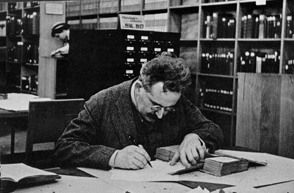 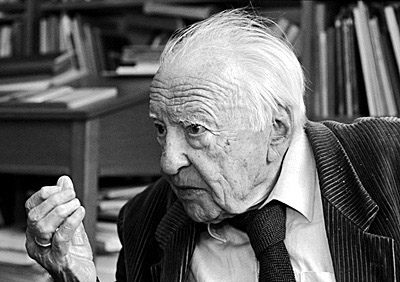
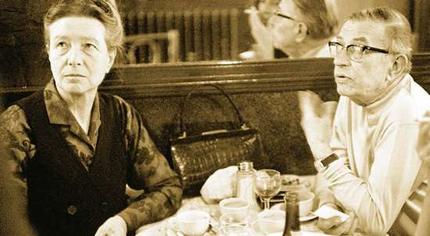
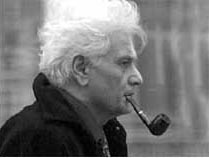
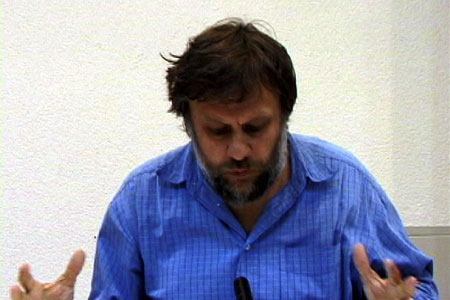
|

